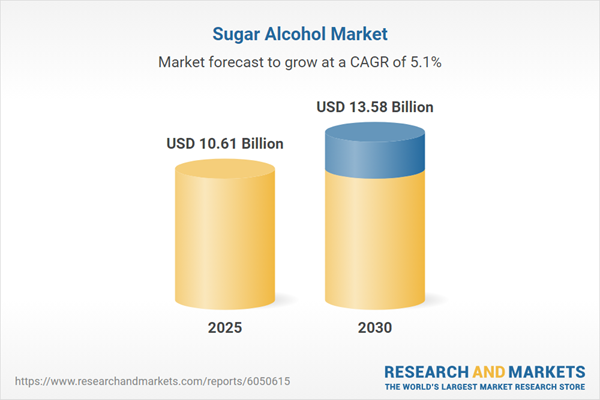Sugar alcohols, or polyols, are carbohydrate-based sweeteners derived from sugars through hydrogenation, offering a low-calorie, low-glycemic alternative to traditional sugar. Widely utilized in food, beverage, and pharmaceutical industries, their demand is surging due to heightened health consciousness among consumers. The market is further propelled by the growing popularity of low-carb diets and rising concerns over obesity and diabetes.
Key Market Drivers
- Diabetes and Obesity Epidemic: Alarmingly high rates of diabetes (29.3 million diagnosed and 9.7 million undiagnosed cases globally) and obesity are driving consumers toward healthier dietary choices. As sugar intake is increasingly linked to these conditions, demand for low-calorie substitutes like sugar alcohols escalates.
- Health-Conscious Lifestyles: Shifting consumer preferences toward nutritious, reduced-sugar products, coupled with awareness campaigns about metabolic health risks, are accelerating adoption.
Geographical Insights
- North America leads market growth, fueled by a proactive shift toward wellness-oriented lifestyles and high prevalence of diabetes and obesity. The region’s robust product innovation and diverse availability of sugar-free options further solidify its dominance.
Reasons for buying this report:
- Insightful Analysis: Gain detailed market insights covering major as well as emerging geographical regions, focusing on customer segments, government policies and socio-economic factors, consumer preferences, industry verticals, other sub-segments.
- Competitive Landscape: Understand the strategic maneuvers employed by key players globally to understand possible market penetration with the correct strategy.
- Market Drivers & Future Trends: Explore the dynamic factors and pivotal market trends and how they will shape up future market developments.
- Actionable Recommendations: Utilize the insights to exercise strategic decision to uncover new business streams and revenues in a dynamic environment.
- Caters to a Wide Audience: Beneficial and cost-effective for startups, research institutions, consultants, SMEs, and large enterprises.
What do businesses use our reports for?
Industry and Market Insights, Opportunity Assessment, Product Demand Forecasting, Market Entry Strategy, Geographical Expansion, Capital Investment Decisions, Regulatory Framework & Implications, New Product Development, Competitive Intelligence.Report Coverage:
- Historical data & forecasts from 2022 to 2030
- Growth Opportunities, Challenges, Supply Chain Outlook, Regulatory Framework, Customer Behaviour, and Trend Analysis
- Competitive Positioning, Strategies, and Market Share Analysis
- Revenue Growth and Forecast Assessment of segments and regions including countries
- Company Profiling (Strategies, Products, Financial Information, and Key Developments among others)
The sugar alcohol market has been segmented as following:
- By Type
- Mannitol
- Sorbitol
- Xylitol
- Lactitol
- Isomalt
- Maltitol
- Hydrogenated Starch Hydrolysates (HSH)
- Others
- By Form
- Syrup
- Powder
- Crystal
- By Application
- Chemicals
- Pharmaceuticals
- Food & Beverages
- Others
- By Geography
- North America
- USA
- Canada
- Mexico
- South America
- Brazil
- Argentina
- Others
- Europe
- Germany
- France
- United Kingdom
- Italy
- Others
- Middle East and Africa
- Saudi Arabia
- Israel
- UAE
- Others
- Asia Pacific
- China
- Japan
- South Korea
- India
- Indonesia
- Taiwan
- Thailand
- Others
- North America
Table of Contents
Companies Mentioned
- ADM
- Cargill Incorporated
- Ingredion Incorporated
- Tate & Lyle
- DuPont
- Associated British Foods Plc
- Mitsubishi Corporation
- Roquette
- Gulshan Polyols
- Santa Cruz Biotechnology
- AVANSCHEM
- Sasma
- Suzhou Minghua sugar alcohol Co
- Shouguang Hua Li Sugar Alcohol Co., Ltd
- Spectrum Chemical Manufacturing Corp.
Methodology

LOADING...
Table Information
| Report Attribute | Details |
|---|---|
| No. of Pages | 143 |
| Published | December 2024 |
| Forecast Period | 2025 - 2030 |
| Estimated Market Value ( USD | $ 10.61 Billion |
| Forecasted Market Value ( USD | $ 13.58 Billion |
| Compound Annual Growth Rate | 5.0% |
| Regions Covered | Global |
| No. of Companies Mentioned | 15 |









